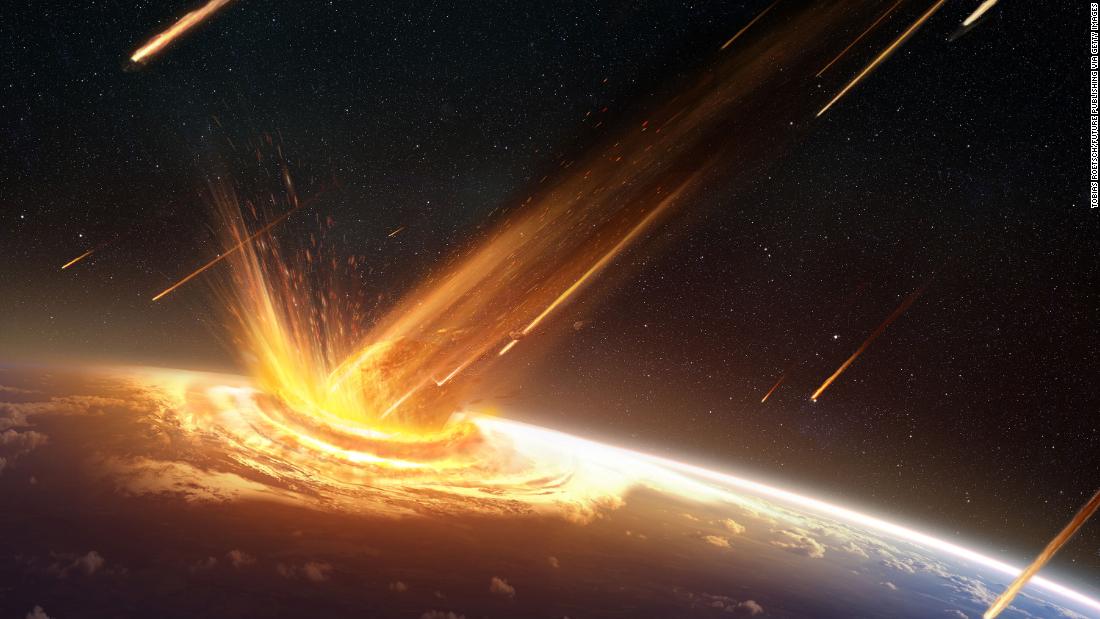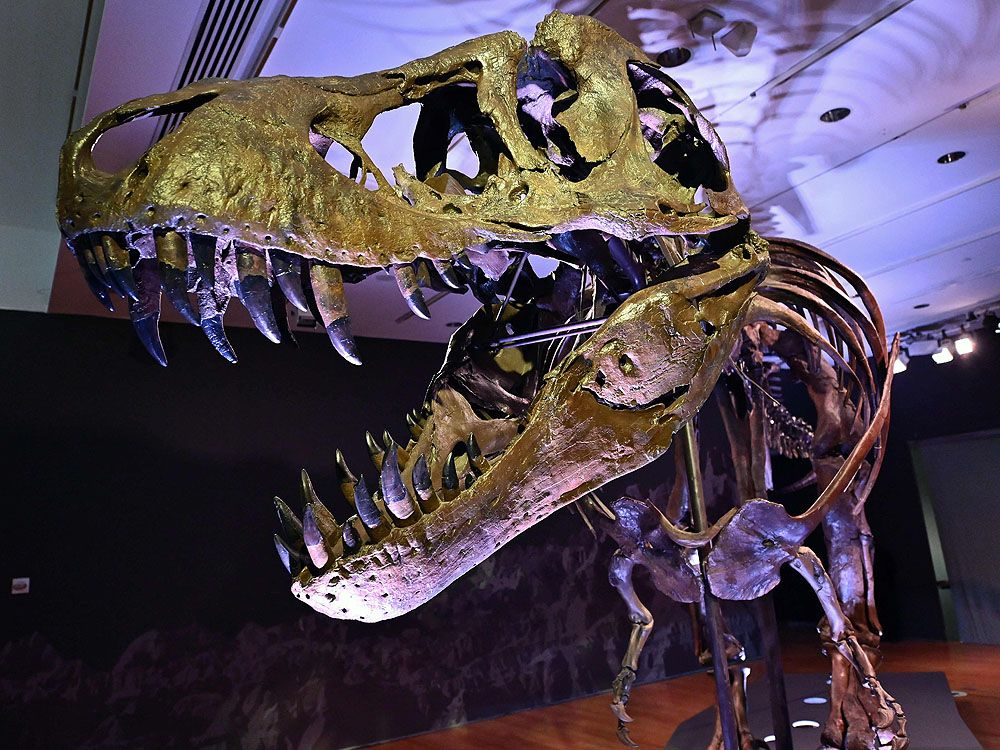New study points finger at comet, not asteroid, as cause of dinosaur extinction
Author of the article ostmedia News
ostmedia News
Publishing date:Feb 19, 2021 • 15 hours ago • 1 minute read
In this file photo taken on September 15, 2020, a Tyrannosaurus Rex skeleton is on display during a press preview at Christie's Rockefeller Center on September 15, 2020 in New York. PHOTO BY ANGELA WEISS /AFP via Getty Images
Article content
A new study has scientists rethinking what caused the dinosaurs to be wiped out.
A study by Harvard researchers published Monday in Scientific Reports points the finger for the extinction event at a comet, not an asteroid, that impacted Earth more than 66 million years ago, according to CNN.
The long-held belief is that an asteroid hit Earth in Mexico’s Yucatan Peninsula, leaving the 175-kilometre wide Chicxulub crater. That event is linked to the Cretaceous-Paleogene extinction event, which killed off the dinosaurs and many other species, according to the study.
But in the new study, co-author Abraham Loeb, a professor of science at Harvard, theorizes that a comet was responsible for ending the dinos’ days. He said the comet originated in the Oort Cloud, a grouping of icy objects near the edge of the solar system.
“It must’ve been a beautiful view, but the fun ended when the rock hit the ground,” Loeb told CNN.
A comet is made up of space debris that consists mostly of frozen gas while an asteroid is a piece of rock found on the Asteroid Belt between Mars and Jupiter.
The study estimated the comet that caused the Chicxulub crater was 6 km wide but other scientists believe that isn’t big enough to cause that amount of damage.
“It is absolutely impossible,” Natalia Artemieva, a senior scientist at the Planetary Science Institute, told CNN.

 arstechnica.com
arstechnica.com

 cnn.com
cnn.com

 torontosun.com
torontosun.com
Author of the article
Publishing date:Feb 19, 2021 • 15 hours ago • 1 minute read
In this file photo taken on September 15, 2020, a Tyrannosaurus Rex skeleton is on display during a press preview at Christie's Rockefeller Center on September 15, 2020 in New York. PHOTO BY ANGELA WEISS /AFP via Getty Images
Article content
A new study has scientists rethinking what caused the dinosaurs to be wiped out.
A study by Harvard researchers published Monday in Scientific Reports points the finger for the extinction event at a comet, not an asteroid, that impacted Earth more than 66 million years ago, according to CNN.
The long-held belief is that an asteroid hit Earth in Mexico’s Yucatan Peninsula, leaving the 175-kilometre wide Chicxulub crater. That event is linked to the Cretaceous-Paleogene extinction event, which killed off the dinosaurs and many other species, according to the study.
But in the new study, co-author Abraham Loeb, a professor of science at Harvard, theorizes that a comet was responsible for ending the dinos’ days. He said the comet originated in the Oort Cloud, a grouping of icy objects near the edge of the solar system.
“It must’ve been a beautiful view, but the fun ended when the rock hit the ground,” Loeb told CNN.
A comet is made up of space debris that consists mostly of frozen gas while an asteroid is a piece of rock found on the Asteroid Belt between Mars and Jupiter.
The study estimated the comet that caused the Chicxulub crater was 6 km wide but other scientists believe that isn’t big enough to cause that amount of damage.
“It is absolutely impossible,” Natalia Artemieva, a senior scientist at the Planetary Science Institute, told CNN.

Astronomers: A comet fragment, not an asteroid, killed off the dinosaurs
Jupiter’s gravity pushed comet toward Sun; comet was ripped apart by tidal forces.
 arstechnica.com
arstechnica.com

Dinosaurs may have been killed off by a comet instead of an asteroid
Researchers theorized that a piece of a comet, rather than an asteroid, hit Earth and caused the extinction of many species 66 million years ago.

New study points finger at comet, not asteroid, as cause of dinosaur extinction
A new study has scientists rethinking what caused the dinosaurs to be wiped out.